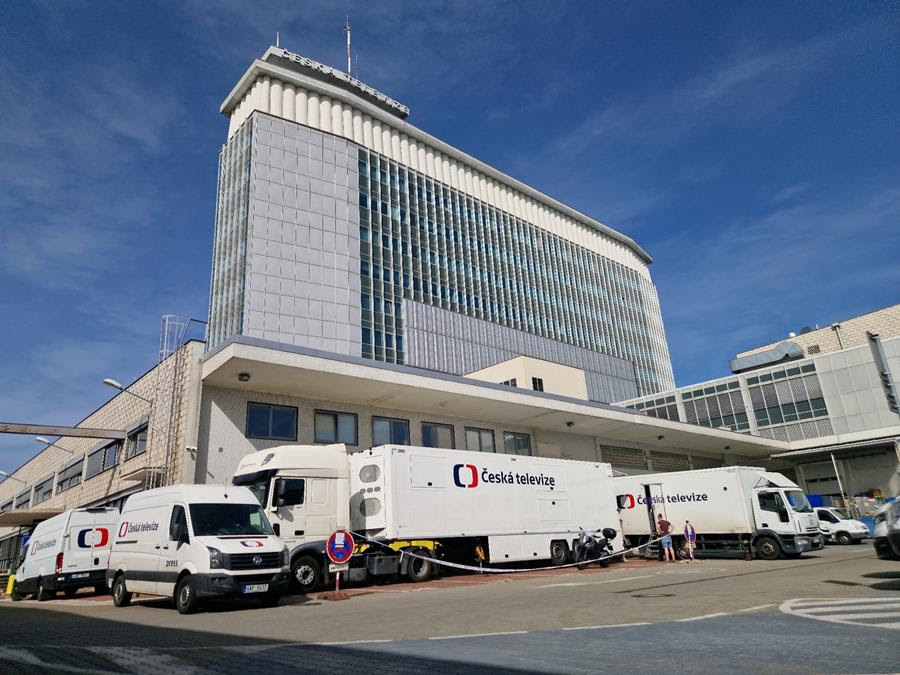Managing assets with Proximity
KWGN-TV graphic designer Daniel Tarango shown using Proximity’s Xenomax’s to search and FTP graphics between multiple vendors’ graphics platforms, all from a centralized interface.
What does media asset management really mean? To broadcasters a media asset is an asset only if it retains value once it has been created. Thus, in simple terms, asset management is the ability to search, locate, re-purpose and reuse media over time and across organizations.
Done properly, asset management can deliver enormous efficiency and quality benefits. This requires above all two things: proper integration with the tools that an organization uses to produce, review and distribute media, and the ability to optimize the way people work.
As digital production has become a reality, there has been a widespread adoption of video servers, nonlinear editing systems, template-based graphics and digital newsroom systems. To manage digital content, vendors created databases to hold and distribute the clips and called it asset management.
Unfortunately, the ability to access data inside a vendor's box and transfer it to another vendor's product is limited at best. Stations now realize that the various asset management systems and technologies do not talk to one another, thereby creating incompatible digital islands.
Some of the larger vendors have started touting an end-to-end solution — offering everything from NLE, video servers, asset management and graphics — but that leaves the customer captive to one vendor.
Other vendors, like Proximity, have chosen to offer asset management solutions that can tie the various vendors' equipment together across the entire production cycle. This allows stations to purchase the best equipment for a particular function and tie all the equipment together with an asset management solution that closely replicates existing workflows. Tribune-owned stations, including KWGN-TV in Denver and the NBC O&O stations (NBC “Arthouse”), have taken this approach with news-graphics production.
The professional video industry's #1 source for news, trends and product and tech information. Sign up below.
The platform combines asset management capability with a workflow component and an integration element. Xenostore provides a single media catalog for visibility to all content throughout an organization. The system tracks the order creation, queue management and review and approval of all new graphics. It also can transcode media into the format required by each device.
Proximity’s Artbox enables artists and producers to manage all of their work from one interface, resulting in a more efficient and accurate content production workflow.
KWGN recently upgraded its Xenostore graphics management software with Xenotrack workflow software from Proximity. The software enables artists, journalists and producers to store and manage content from a standard Web browser.
The WB-affiliated station uses Proximity software to produce a three-and-a-half hour morning news slot each weekday and for its one-hour nightly newscast seven days a week. The graphics department also leverages the software to move and convert graphics for promotional spots and print ads.
With Xenostore, the station's producers can quickly search to find previously designed graphics for re-use. The database quickly locates desired graphics and places them directly in the newscast, without the need of a designer. Thus, KWGN's designers can now focus their time on new graphics creation and less on administration.
Interfacing all the devices used in the content-creation process and tracking assets through the production process streamline the station's workflow.
The system provides producers/journalists in the newsroom with access to assets. It also offers a standardized method to customize assets and tie them to specific stories. Producers/journalists are able to order new graphics as needed and track the progress of requests. Artists can view all requests for new content on their desktop and electronically assign requests to other artists. Once artists finish creating content, assets are automatically pushed to playout devices and made available for review.
Proximity's newest product, Artbox, is taking this concept further. It manages clips, animations, stills and audio and is targeted at TV promo and news production workflows. Now, artists can manage all of their work from one interface. Artbox integrates format conversion, storage, workflow management and search and retrieval of media into a single device. The content-management module stores media in its native format. Users can search, locate, transfer and transcode media across multiple platforms and formats.
Artbox's workflow-management module introduces the concept of a “project”, which gives producers and journalists the ability to associate multiple pieces of artwork that exist in different formats and across multiple devices with a single story.
Workflow efficiencies are quickly realized because, among station groups, small market stations now have access to high-quality graphics created by big market stations. The improved on-screen look has a positive and direct impact on news ratings and revenue.
As asset management solutions become more workflow-centric, they will merge with automation solutions. System redundancy, file backup/mirroring and archiving will become even more critical as digital content grows and stations learn how to re-purpose existing content. Broadcasters want interoperability and flexibility, and they want it on their own terms.
Luke Tristram is CEO and Sai Koppala is senior vice president of sales, marketing and support for Proximity.
